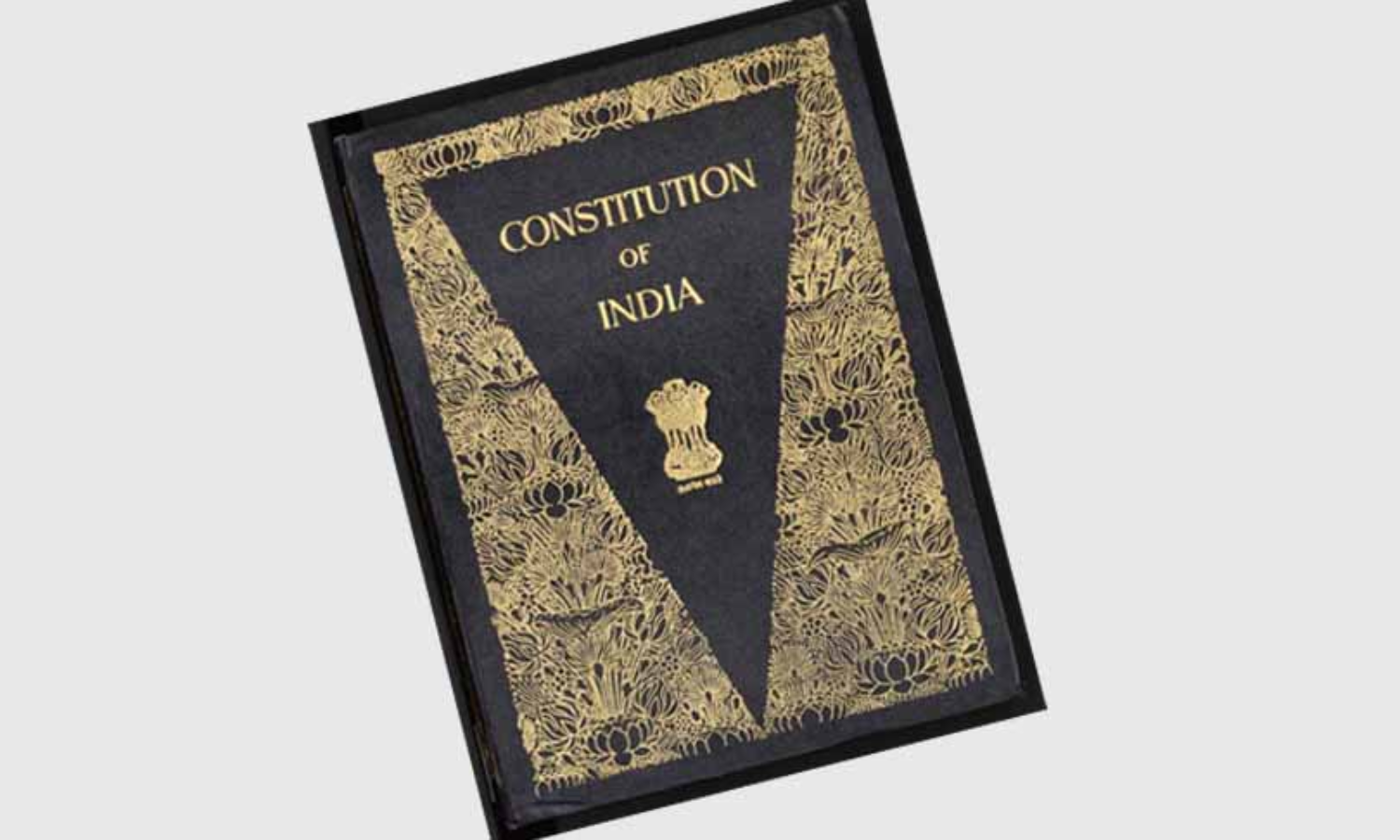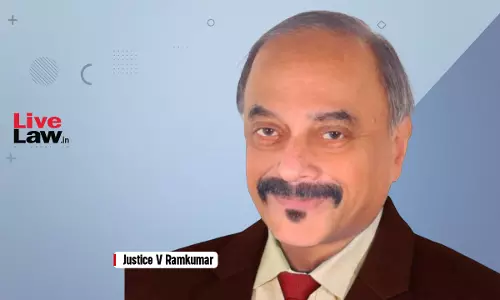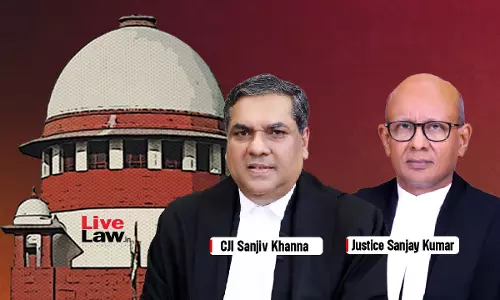71st Republic Day : A Look At The Constitutional Amendments Struck Down By Courts On Basic Structure Doctrine

Constitution of a country is the basic norm - Grund Norm - which includes fundamental principles which lay down the foundation of a society. Though the phrase 'basic structure' is not explicitly mentioned in the Constitution, this was recognised in the case of Kesavananda Bharati v. State of Kerala. The 13-judge Constitution Bench of the Supreme Court in this case said that every...
Constitution of a country is the basic norm - Grund Norm - which includes fundamental principles which lay down the foundation of a society. Though the phrase 'basic structure' is not explicitly mentioned in the Constitution, this was recognised in the case of Kesavananda Bharati v. State of Kerala. The 13-judge Constitution Bench of the Supreme Court in this case said that every provision of the Constitution can be amended provided the basic foundation and structure of the Constitution remains the same. The judges in this case mentioned some aspects of the Constitution which could constitute the 'basic features'. They are :
(i) Supremacy of the Constitution
(ii) Republican and Democratic form of Government
(iii) Secular character of the Constitution
(iv) Separation of powers between the Legislature, the Executive and the Judiciary
(v) Federal character of the Constitution.
Article 368 of the Constitution of India grants power to Parliament to amend the Constitution. Various Constitutional Amendments made under the said provision were partly struck down by the Courts on the ground that the basic structure was damaged.
On this 71st year of the Indian Republic, lets have a look at Constitutional amendments struck down by Courts applying basic structure doctrine.
This case challenged the Section 46 (f) of the 39th Constitutional Amendment Act, 1975. This amendment inserted Article 329-A which made the elections of President, Prime Minister, Vice-President and the Speaker of Lok Sabh beyond judicial review by any court of law. The same can be challenged only before a committee formed by the Parliament . This was the first case where the landmark decision of Kesavananda Bharati was applied by the apex court. Clauses (4) and (5) of 329-A was proposed to struck down as it restrains the standards of free and fair elections which were regarded as a part of the basic structure of the Constitution. It was said that the only way to reconcile any conflict in an election petition is by a judicial review and Clauses (4) and (5) of 329-A took away these rights. The said amendment also destroyed the separation of powers which is an important part of the basic structure. Thus the apex court declared the impugned Article 329-A (4) and (5) as unconstitutional and void. The apex court said,
"Generality and equality are two indelible characteristics of justice administered according to law. The preamble to our Constitution by which the people of India resolved solemnly to secure to all its citizens equality of status and opportunity finds its realization in an ampler measure in Article 14 which guarantees equality before the law and the equal protection of laws to all persons, citizens and non-citizens alike. Equality is the faith and creed of our democratic republic and without it, neither the Constitution nor the laws made under it could reflect the common conscience of those who owe allegiance to them."
In this case Section 4 as well as Section 55 of the Constitution 42nd Amendment Act, 1976 was challenged before the apex court. The court in this case also relied on the majority decision of the Kesavananda Bharati case upholding the basic structure doctrine. Clauses (4) and (5) of Article 368 said no amendment made under the said article be questioned in any court on any ground and that the power to amend the Constitution by the Parliament has no limitation. The court declared that Section 55 of the Constitution 42nd Amendment Act as unconstitutional and void since it damages the basic structure and goes beyond the amending power of Parliament. The apex court said,
" Our Constitution is founded on a nice balance of power among the three wings of the State, namely, the Executive, the Legislature and the Judiciary. It is the function of the Judges, nay their duty, to pronounce upon the validity of laws. If courts are totally deprived of that power the fundamental rights conferred upon the people (will become a mere adornment because rights without remedies are as writ in water. A controlled Constitution will then become uncontrolled. Clause (4) of Article 368 totally deprives the citizens it one of the most valuable modes of redress which is guaranteed by Article 32. The conferment of the right to destroy the identity of the Constitution coupled with the provision that no court or law shall pronounce upon the validity of such destruction seems to us a transparent case of transgression of the limitations on the amending power."
In this case, the writ petition challenged the constitutional validity of the 32nd Constitution (Amendment Act) which inserted Clause (5) of Article 371-D of the Constitution. The said clause dealt with the power conferred on the State Government to modify or annul the final order of the Administrative Tribunal. The court said it is violative of the basic structure doctrine since it makes the Administrative Tribunal a less effective and efficacious institutional mechanism or authority for judicial review. The court said,
" We must therefore hold that the Proviso to Clause (5) of Article 371-D is unconstitutional as being ultra vires the amending power of Parliament and if the Proviso goes, the main part of clause (5) must also fall along with it, since it is closely interrelated with the proviso and cannot have any rationale for its existence apart from the Proviso. The main part of clause (5) of Article 37 I-D would, therefore, also have to be declared unconstitutional and void."
This case was regarding Section 46 of the 42nd Constitution (Amendment Act) which inserted Articles 323 A and 323 B in the Constitution of India. The question arose in the instant case is whether the Tribunals constituted under Articles 323 A and 323 B possess the competence to test the constitutional validity of statutory provision. The court found that the articles excluded the jurisdiction of the High Court and Supreme Court under Article 226/227 and 32 of the Constitution. The court opined, the jurisdiction of the High Courts and Supreme Court is part of the inviolable basic structure of the Constitution. Since the Amendment damaged the basic structure, the same was held unconstitutional and void. The apex court said,
"While this jurisdiction cannot be ousted, other courts and Tribunals may perform a supplemental role in discharging the powers conferred by Articles 226/227 and 32 of the Constitution. The Tribunals created under Article 323A and Article 323B of the Constitution are possessed of the competence to test the constitutional validity of statutory provisions and rules."
"we hold that Clause 2(d) of Article 323A and Clause 3(d) of Article 323B, to the extent they exclude the jurisdiction of the High Courts and the Supreme Court under Articles 226/227 and 32 of the Constitution, are unconstitutional", observed the Court.
This case came before a 5 judge bench of the Supreme Court regarding the constitutional validity of the 52nd Constitutional Amendment Act, 1985. The said Amendment Act inserted tenth schedule and the constitutional validity of the same was challenged before the apex court. The court observed that para 7 of the tenth schedule enacted a provision for complete exclusion of judicial review including the jurisdiction of the apex court under Article 136 and the High Courts under Article 226 and 227 of the Constitution. This was found to be damaging the concept of judicial review, which was held to be part of basic structure. Here in this case the apex court applied the Doctrine of Severability to strike down para 7 alone, retaining the remaining part of the tenth schedule.
- Rajendra N Shah v. Union of India (Gujarat HC)
A PIL was filed before the Division Bench of the Gujarat High Court for quashing of the 97th Constitution Amendment Act, 2011 introducing part IX B containing Articles 243ZH and 243ZT as ultra vires the Constitution of India. The Part IX B of the Constitution (Amendment Act) 2011 emphasized that the democratic functioning of Cooperative societies had been accorded a constitutional status. The court said,
"one of the basic structures of the Constitution, viz. the principles of federalism has been affected. There is no dispute that federalism is one of the basic structure of our Constitution. Once the subject of Co-Operative Societies is in the List II of the 7th Schedule, by depriving the State Legislatures of their free exercise of the right to enact on the said subject and by curtailment of their right over the subject matter to abide by the newly enacted provision of the Constitution without following the requirement of ratification as provided in Article 368(2), the doctrine of federalism which is one of the basic features of the Constitution has been infringed."
The High Court in this case declared the Amendment as ultra vires the Constitution of India for not taking recourse to Article 368(2) of the Constitution providing for ratification by the majority of the State Legislatures. The appeal in the said case is still pending before the Supreme Court.
The petition in this case challenged the 99th Amendment Act of 2014 which inserted Article 124-A regarding the appointments of the National Judicial Appointments Commission (NJAC) on the ground that it violates age old-system of appointment of the Judges of the Supreme Court and the High Courts through the appointment. The 5-judge bench of the Supreme Court said,
" The 99th Constitution Amendment Act and the NJAC Act not only reduce the Chief Justice of India to a number in the NJAC but also convert the mandatory consultation between the President and the Chief Justice of India to a dumb charade with the NJAC acting as an intermediary. On earlier occasions, Parliament enhanced its power through constitutional amendments, which were struck down, inter alia, in Indira Nehru Gandhi and Minerva Mills. The 99th Constitution Amendment Act unconstitutionally minimizes the role of the Chief Justice of India and the judiciary to a vanishing point in the appointment of judges. It also considerably downsizes the role of the President. This effaces the basic structure of the independence of the judiciary by sufficiently altering the process of appointment of judges to the Supreme Court and the High Court, or at least alters it unconstitutionally thereby striking at the very basis of the independence of the judiciary."
Thus the bench in a majority of 4:1 rejected the NJAC Act as well as the 99th Constitutional Amendment as "unconstitutional and void". The court further held that the collegium system that existed before the NJAC would again become operative.
Recently, the Supreme Court Justice Kurian Joseph said that he regretted the decision in the NJAC in which he was a part of the Constitution Bench wherein the majority struck down the creation of NJAC to replace the collegium system for appointment of judges.
Prior to Kesavananda Bharati Case
Prior to the the 'basic structure doctrine' that was laid down in Kesavananda Bharati in 1973, the first Constitutional Amendment Act 1951 was challenged in the case of Shankari Prasad v. Union of India. The question arose was whether Articles 31 A and 31 B in the Constitution of India which was inserted in the Constitution (First Amendment) Act 1951 was ultra vires and unconstitutional. The apex court held that the power of the Parliament to amend the Constitution including the Fundamental RIghts is evoked in Article 368 of the Constitution and hence not violative of the provisions of the Constitution. Hence the Articles 31 A and 31 B were held valid.
The ruling of Shankari Prasad was upheld by the apex court in Sajjan Singh v. State of Rajasthan which challenged the 17th Amendment of the Constitution that added 44 new Acts to the IX schedule. Though in I.C. Golaknath v. State of Punjab to check the colourable exercise of power and save democracy from autocratic actions of Parliament, the 6:5 majority of the apex court held that the Parliament cannot amend the Fundamental Rights.
Post Kesavananda Bharati Case
Post Kesavananda Bharati 'basic structure doctrine' there are also a few cases where the Constitutional Amendment was held constitutional and valid. In Waman Rao v. Union of India the apex court said,
" In Keshvananda Bharati decided on April 24, 1973 it was held by the majority that Parliament has no power to amend the Constitution so as to damage or destroy its basic or essential features or its basic structure. We hold that all amendments to the Constitution which were made before April 24, 1973 and by which the 9th Schedule to the Constitution was amended from time to time by the inclusion of various Acts and Regulations therein, are valid and constitutional."
In M.Nagraj v. Union of India where a writ petition was filed before the Supreme Court to quash the 77th Constitution Amendment Act 1995, 81st Constitution Amendment Act 2000, 82nd Constitution Amendment Act 2000 and 85th Constitution Amendment Act 2001 amendment in Article 16(4A) (4B) providing reservation in promotion with consequential seniority as being unconstitutional and violative of the basic structure as well as 77th, 81st and 82nd Amendment Acts of the Constitution The apex court in this case unanimously upheld the validity of these provisions since it did not destroy the equality code of the Constitution. The apex court said,
" However, in this case, as stated, the main issue concerns the "extent of reservation". In this regard the concerned State will have to show in each case the existence of the compelling reasons, namely, backwardness, inadequacy of representation and overall administrative efficiency before making provision for reservation. As stated above, the impugned provision is an enabling provision. The State is not bound to make reservation for SC/ST in matter of promotions. However if they wish to exercise their discretion and make such provision, the State has to collect quantifiable data showing backwardness of the class and inadequacy of representation of that class in public employment in addition to compliance of Article 335. It is made clear that even if the State has compelling reasons, as stated above, the State will have to see that its reservation provision does not lead to excessiveness so as to breach the ceiling-limit of 50% or obliterate the creamy layer or extend the reservation indefinitely.
Subject to above, we uphold the constitutional validity of the Constitution (Seventy-Seventh Amendment) Act, 1995, the Constitution (Eighty-First Amendment) Act, 2000, the Constitution (Eighty-Second Amendment) Act, 2000 and the Constitution (Eighty-Fifth Amendment) Act, 2001.
I.R.Coelho (Dead) By Lrs v. State of Tamil Nadu & Ors. the apex court reaffirmed the basic structure doctrine laid down in Kesavananda Bharati case. The court also reiterated that the Articles 14,15,19 and 21 are parts of basic structure.
In Ashok Kumar Thakur v. State of Bihar, SC upheld the 93rd Constitution Amendment Act, which inserted Article 15(5) in the Constitution to provide for OBC reservation in educational institutions.
At present, a batch of petitions challenging the validity of the 103rd Constitution Amendment which inserted Article 15(6) to provide for economic reservation is pending in the Supreme Court.




